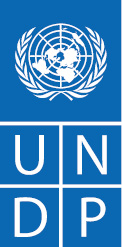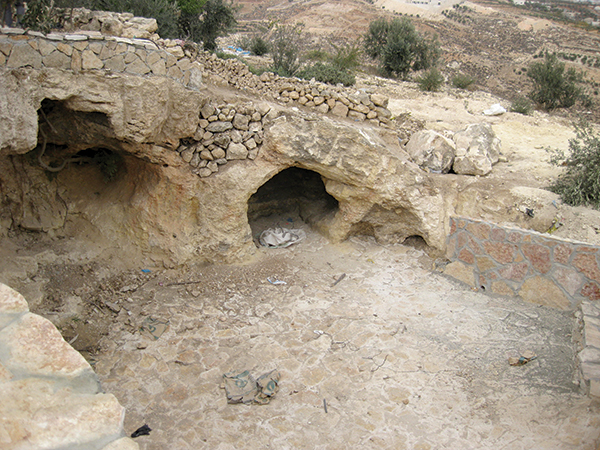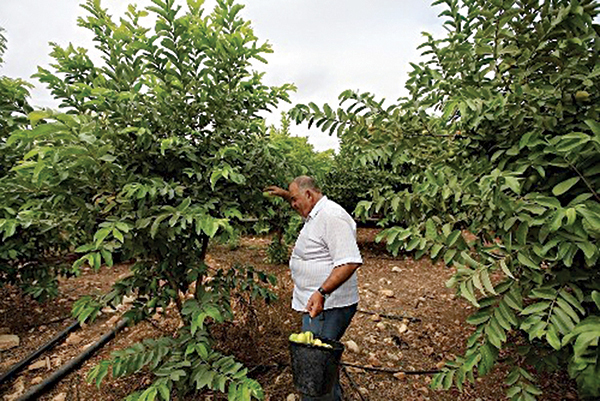
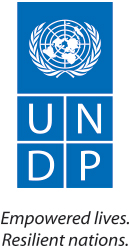
Courtesy of the United Nations Development Programme Programme of Assistance to the Palestinian People (UNDP/PAPP)
A New Opportunity Has Emerged!
Abu Azzam is a Palestinian farmer from Jayyous village in the Qalqilya governorate, a village near the western border of the West Bank. Residents in the area rely on farming and agriculture as their main source of income; and Abu Azzam managed to raise and educate his seven children by working in agriculture. For many years, he succeeded in looking after his land despite all kinds of hardship, especially as his land was at risk of being annexed due to its proximity to the Israeli settlement of Tsur Yigal. But, according to Abu Azzam, everything changed in October 2002: When the Barrier was built, annexing around thirty dunums (three hectares) of his land to become an enclave between the Barrier and the Green Line in what is now referred to as the ‘Seam Zone’, Abu Azzam and many other farmers lost their ability to access their land. This restriction was partially lifted when Abu Azzam got a special ‘farmer permit in the Seam Zone’ that enabled him to access and look after the land that his family had owned for generations.
Furthermore, upon the erection of the Barrier, the Israeli authorities did not permit farmers to enter the large amounts of diesel needed to operate the underground wells in the area west of the Barrier. At the same time, and to add to the challenges farmers were facing, the price of diesel increased significantly, which affected the farmers’ purchasing power and even further disrupted their ability to operate the wells and irrigate their diminishing land. Initially, the Swedish NGO We Effect implemented a short-term humanitarian intervention that during the summer season reduced the cost of irrigation water by fifty-two percent when it subsidized the cost of diesel fuel needed to operate some of the wells in the Seam Zone; then, support was provided by the UNDP’s Community Resilience and Development Programme (CRDP).
“The Community Resilience and Development Programme (CRDP) helps farmers in saving on water prices, which means that many farmers are now able to come back to their land despite the difficulties of accessibility. I personally now save half on water prices, which means that I can plant and irrigate more of my land,” says Abu Azzam.
Improving access to irrigation water in Hableh, Qalqilya and Khirbet Jubara are flagship CRDP interventions targeting agricultural lands of the Seam Zone. The project was initially categorized as humanitarian – subsidy of diesel – and has proven successful in its transition to development aid. Regardless of the difficulties of access they face, the project aims to support the resilience of farmers, so they can continue to attend to their land, by enhancing their access to irrigation water, lowering its cost, and increasing the accessible quantities. This goal was achieved when CRDP partner We Effect implemented the project by replacing the deteriorating diesel-run pumping systems of three underground water wells (two of them in the Seam Zone) with new, more efficient ones, operated by electricity. After completing most of the rehabilitation processes, the discharge rates of the three targeted wells increased about twofold. This had a great impact on the farming activities in the area because it decreased the irrigation costs for farmers, which in turn increased the irrigated area by about two hundred dunums (twenty hectares), and enhanced the competitiveness of their produce. The guava planted in the area is the best!
Milk and Butter
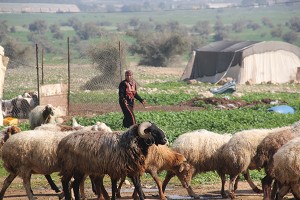 Khirbet Ar-Rahawa, a Bedouin community south of Hebron, did not have any electricity, nor does it have schools. So children had to go to a nearby village to get an education – due to the lack of electricity, they often could not finish their assignments at home. Nayfeh used to live on her own in Khirbet Ar-Rahawa. She took care of her brother’s one hundred and fifty sheep, while he lived with his wife and children in a nearby village.
Khirbet Ar-Rahawa, a Bedouin community south of Hebron, did not have any electricity, nor does it have schools. So children had to go to a nearby village to get an education – due to the lack of electricity, they often could not finish their assignments at home. Nayfeh used to live on her own in Khirbet Ar-Rahawa. She took care of her brother’s one hundred and fifty sheep, while he lived with his wife and children in a nearby village.
Nayfeh used to milk sheep and make butter in a process that can take up to five hours a day. But since the Community Resilience and Development Programme, as part of UNDP’s support to marginalized communities in Area C, has provided Nayfeh with solar panels and a milk churn, not only has the process of making butter decreased to half an hour instead of four, her brother and his family have moved back to the Bedouin community in Khirbet Ar-Rahawa.
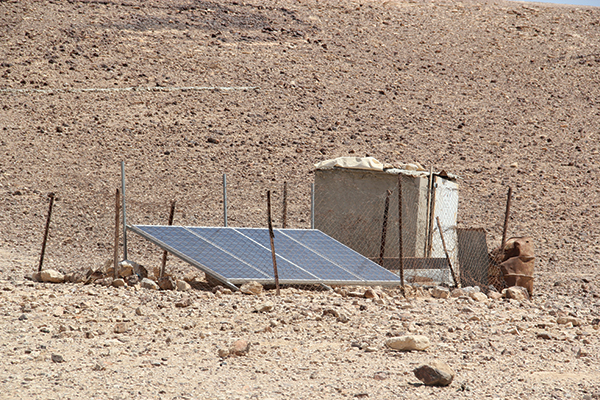
“Thanks to the project, I see my family more,” Nayfeh says. “The kids can study at home after school now that we have solar electricity. I used to have chronic pain in my arms because of the shaking to make butter, but now, no more pain or shaking”.
A Cave With A Well
Tana is a herder community located in the eastern part of the Nablus Governorate. The community is located in Area C and considered by the Israeli army to be a closed military area. Abu Afif is a father of nine and a shepherd with two hundred sheep. He resides in the Tana hamlet so he can graze sheep, whereas his wife and nine kids reside in the nearby town in order for them to be able to attend school. The family joins him in December during the milking season. Because Abu Afif’s tent has been demolished many times, he is now living inside a cave. He used to travel a long distance to fetch water for his sheep, but since the UNDP renovated the water-harvesting cisterns in the Tana area, Abu Afif has access to water right next to his cave.
Throughout the area, Abu Afif has helped in locating tens of ancient and abandoned water cisterns that were renovated during the lifetime of the project.
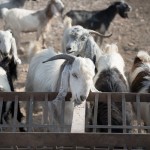
The Community Resilience and Development Programme (CRDP) is an umbrella of multi-sector projects that aim at injecting the developmental capital needed for Palestinians’ sustainable development through working with partners and communities on four main outputs: public infrastructure, protection of natural resources, income generation, and human rights. The program is implemented by the UNDP’s Programme of Assistance to the Palestinian People, funded by the Swedish, Austrian, and Norwegian governments, and led by the Palestinian government. Until this date, fifty-two projects in various locations in Area C and East Jerusalem have been implemented that contributed to providing new opportunities and supported the resilience of hundreds of families.

